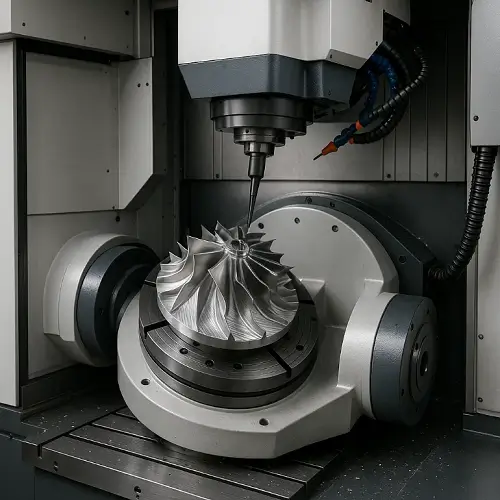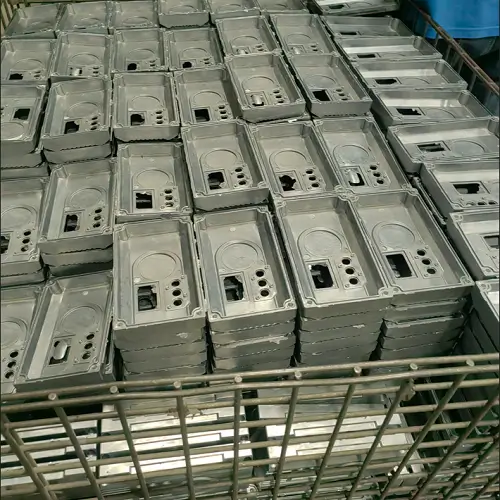The term blech mit laser schneiden—German for “laser cutting sheet metal”—is becoming more common not just in German-speaking countries but also among international manufacturers searching for precise and cost-effective cutting solutions. At JeekRapid, we started getting similar inquiries as early as 2022 from clients in Europe who needed prototype enclosures made from thin stainless steel. Over time, this term has come to reflect a broader industry shift toward tighter tolerances and cleaner finishing methods. In this article, we share how we approach laser cutting at JeekRapid, what makes it work, and what we’ve learned from delivering real-world results.

How Laser Cutting Sheet Metal Works
Laser cutting uses a focused beam generated by fiber or CO2 lasers to precisely melt or vaporize metal. The beam is controlled by JeekRapid’s CNC programming, while assist gases such as nitrogen or oxygen are used to clear debris and control cut quality.
We often use nitrogen when cutting stainless steel enclosures for automation clients, as nitrogen helps maintain clean, oxide-free edges, eliminating the need for post-processing and saving steps and costs. On the other hand, when cutting mild steel brackets, oxygen helps accelerate the cutting process without affecting accuracy.
Benefits of Laser Cutting Sheet Metal (Blech mit Laser Schneiden)
Advantages of Tolerance
In actual production, even for parts with complex shapes, we consistently control tolerances within ±0.1 mm. One of our recent jobs involved cutting brushed 304 stainless steel for medical device enclosures. The customer required a press-fit cover, and the edges had to be smooth and dimensionally consistent. Laser cutting allowed us to go directly from nesting to final parts without secondary milling.
Clean Edges Without Secondary Processing
A common feedback we get from customers—especially those producing visible parts like panels or branding panels—is how smooth the cut edges are. In a project for a display equipment client, we delivered over 400 parts without the need for edge sanding or polishing, reducing the client’s time by about 20%.
Scalable Efficiency
Laser cutting allows us to quickly complete the entire process from quoting to production. When a client needed 150 aluminum brackets cut and shipped within 48 hours, we used internal nesting software to optimize the full sheet layout and started cutting that same afternoon.
Meets Custom Needs
At JeekRapid, whether it is a single prototype or small pilot batches, laser cutting enables us to flexibly adjust without requiring new tooling. A startup client requested a design modification during production—because no hard tooling was involved, we updated the file and resumed cutting within an hour.
Recommended Materials and Thickness Ranges
| Material | Typical Thickness Range (mm) | Notes |
|---|---|---|
| Mild Steel | 0.5 – 20 | Oxygen helps with faster cutting |
| Stainless Steel | 0.5 – 15 | Nitrogen preferred for clean finish |
| Aluminum | 0.5 – 10 | Fiber laser recommended |
| Copper & Brass | 0.5 – 6 | Needs high-power fiber laser |
At JeekRapid, we typically cut 1.5–2 mm aluminum for housings and 2–3 mm stainless for support frames.
Real-World Applications
The method of blech mit laser schneiden applies to a wide range of parts we’ve built, and JeekRapid can deliver for you:
Automotive prototypes: We cut thin stainless steel brackets for electric vehicle battery holders
Electronics: Customized EMI shields for PCB modules using 1 mm brass sheets
Medical equipment: Instrument enclosures with strict bending and cutting tolerances
Industrial machinery: Panel guards and maintenance doors
Retail fixtures: Perforated signage and lighting cutouts
Each field has different requirements for edge conditions and geometry, but laser cutting allowed us to meet specifications without secondary processing.
Quality Control Standards: We follow ISO-guided inspection steps. You can ask your supplier how they check cutting accuracy.
Fast Turnaround Capability: For our startup clients, the ability to quote, cut, and ship within 2-3 days is often crucial. If you have doubts about our precision or scale, you are welcome to visit our factory anytime.
Feedback During DFM: Some of our best results come from flagging inefficient layouts or improper tab placements before cutting.
JeekRapid FAQ
How thick steel can you cut?
We cut steel up to 16 mm thick, but for control and consistency, most parts fall within the 1-6 mm range.
Is it expensive?
It depends on part complexity and sheet size, but for many one-off or 100-unit runs, laser cutting saves tooling costs and time.
Can you cut logos or complex shapes?
Yes. In a recent job, we laser-cut text and hexagonal perforations in a single pass.
What about shiny metals like brass?
We use a 3 kW fiber laser with a specific wavelength to safely and cleanly process reflective materials.
About Our Shop Experience Summary
When customers search for blech mit laser schneiden, they’re usually not just looking for a machine—they’re looking for parts that meet spec, look clean, and arrive on time. In our shop, laser cutting has become the go-to method for achieving exactly that, especially for prototypes and functional metal parts.
JeekRapid’s approach combines laser cutting with forming, surface finishing, and CNC machining. This lets us ship full assemblies, not just flat blanks.
If you have a metal part in mind and aren’t sure what method fits, send us a drawing. We’re always happy to take a look and recommend a process that matches your priorities.
Author: jeek
JeekRapid Engineering Team
Since 2013, our team has delivered sheet metal and CNC parts to over 500 clients across Europe, North America, and Southeast Asia.Send us your part file here and we’ll review it within 12–24 hours.


